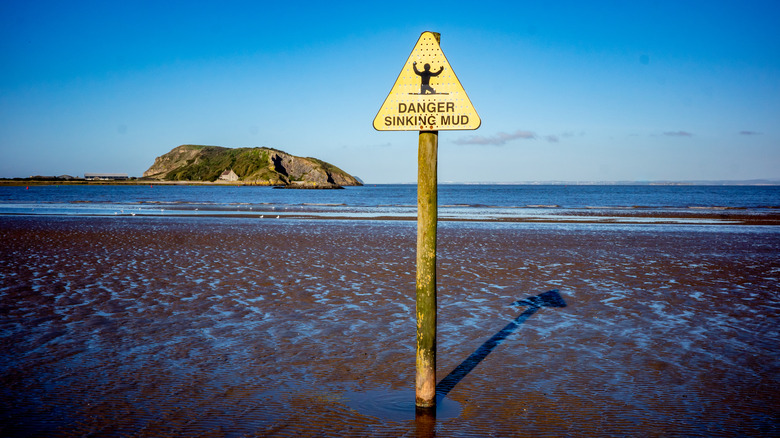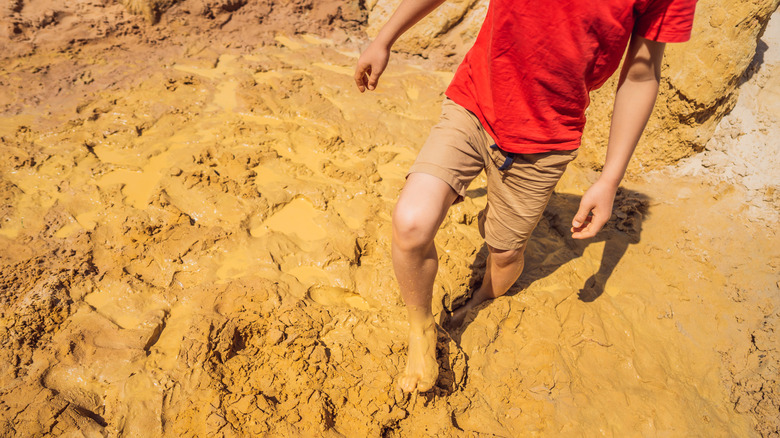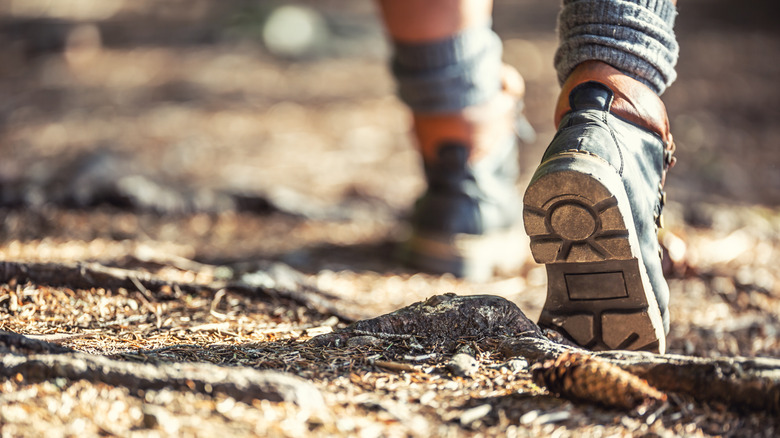Remember the nightmares you had after watching Indiana Jones struggle in quicksand? You know the ones: You’re sinking slowly into the earth, one arm desperately reaching skyward for help until there’s nothing left but your fingertips. Many of us grew up with these terrifying scenes that showed heroes dramatically sinking to their doom in bubbling sand pits. And while most of these dramatic depictions sound like pure Hollywood fiction or a classic urban legend you’d hear around the campfire, quicksand is very real.
Don’t buy it? Just ask Mitchell O’Brien, a Michigan resident who had the unlucky experience of getting caught in the phenomenon first-hand (via MLive). Earlier this month, while enjoying a casual beach day, O’Brien suddenly found himself trapped waist-deep near a hydraulic dredging operation. Unable to pull himself free or move his legs, he quickly realized there was nothing he could do to escape — and the event ultimately resulted in an emergency rescue operation to help pull him out of the sandy trap.
Although quicksand isn’t necessarily a movie monster that swallows people whole, it does pose some pretty serious real-life dangers for hikers and beachgoers off the screen. Put simply, quicksand forms when sand or soil becomes saturated with water. This creates a mixture where the water pushes apart sand particles and reduces the friction between them. As a result, when you step on quicksand, the ground initially appears solid, only to start liquifying under pressure (kind of like a gel). And, as you sink, the sand and water separate, creating a densely packed layer that solidifies and traps your body. Thankfully, and contrary to those dramatic film scenes, quicksand won’t ever pull you completely under because humans are a lot less dense than quicksand. Which means you’ll probably only sink to about waist level (at worst).
What quicksand looks like (and how to avoid it)
Although this might be surprising to read, the truth is that you’ll rarely find quicksand in deserts. On the contrary, quicksand actually needs water to form. Which explains why it’s typically found in wetter environments like near riverbanks, along beaches, in marshes, or close to lakeshores — essentially transforming peaceful waterways into some of the most dangerous places to try and take a swim. Along with that, areas with natural springs, creek mouths, or underground water flows also create the perfect conditions for quicksand to develop.
With this in mind, knowing how to identify potential quicksand can save you from a pretty sticky situation. Ideally, you’ll want to keep a close watch for unusual terrain features like rippled ground surfaces or water bubbling up from below the earth, since this often indicates unstable sand that might not be able to support your weight.
One of the easiest ways to stay safe is to always think twice about hiking off-trail and make sure to test any suspicious ground before actually stepping on it. You can do this by carrying around a walking stick or trekking pole, and tapping the surface ahead of you when walking across any potentially dangerous areas. If the ground gives way easily under your walking stick, choose another path. If the surface feels firm and stable, it should be safe to keep going. A basic precaution that takes just a few seconds, but can save you from hours of trouble.




